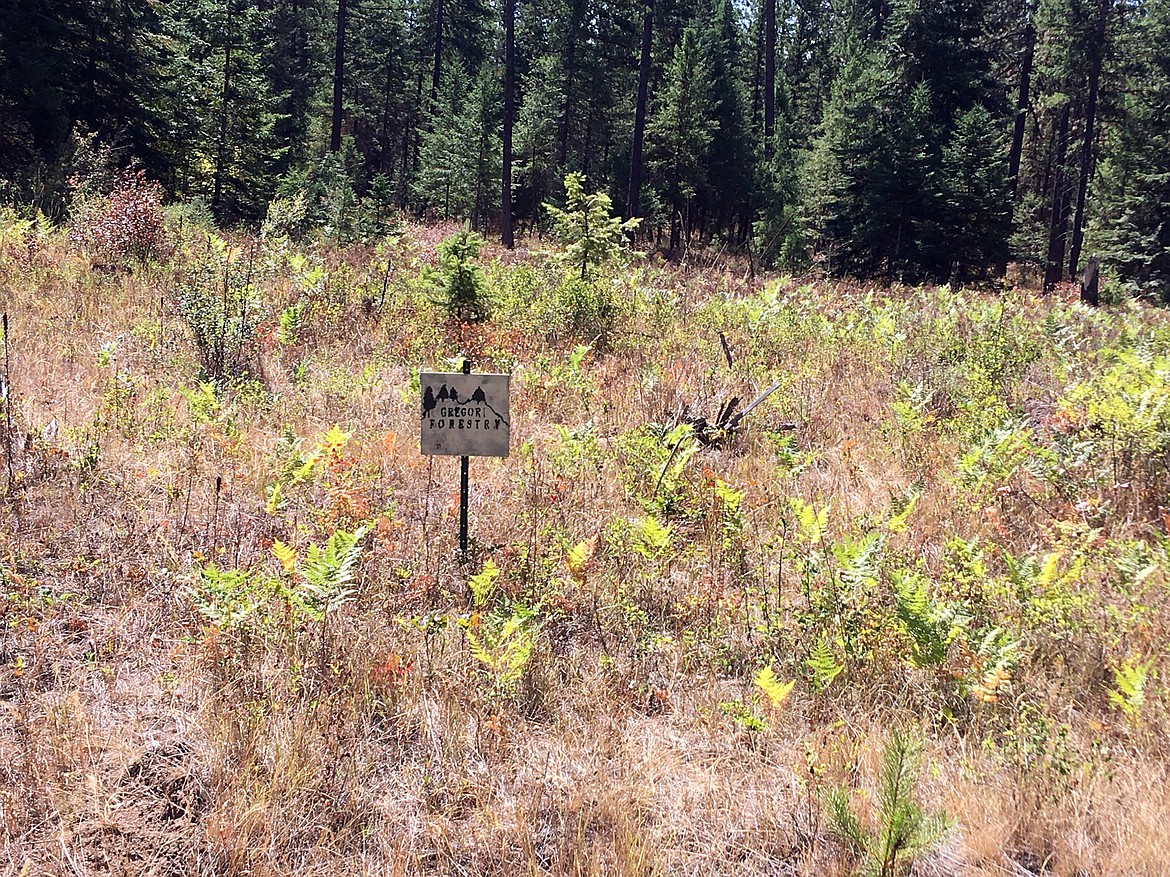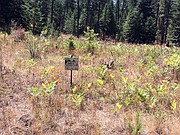A family rooted in forestry preserves land for the future
Roger Gregory’s heritage is rooted in forestry. His father came to Sandpoint in 1907 at the age of 18 to work in the lumber camps as a horse logger, which he had done in Austria.
At 12 years old, he was harnessing and driving a team of horses. Around 1914 he purchased 22 acres near Elmira and built a log home from trees harvested from the property. Having a deep appreciation for the land, Roger’s father raised his son to cherish the forests and care for the land that supported them.
In 1975, Roger purchased 92 acres near Oldtown as an investment property, giving him a place to practice his favorite pastime.
“I like trees and forests. Forestry is my hobby,” he said.
The upland forest situated at the base of the Selkirk Mountain Range has been carefully tended by Roger and his family through the years. Working the forest together, he passed his father’s values of land stewardship to his own children.
“I’ve planted over 12,000 trees,” he recalls.
Perhaps because of his connection with the trees and the family time that he cultivated on this land, an attachment began to take root and he no longer viewed it as merely a financial asset.
“I changed my mind,” he simply said. “I’m leaving it for posterity.”
Roger wants this 92-acre parcel, which lies near other protected lands, to remain as an unchanged, undeveloped forest under the care of people who will be responsible stewards of the land. When asked what he hopes this land will look like 50 years from now, he replied, “Just like it is now.”
Roger has entered into a voluntary agreement with Kaniksu Land Trust to preserve the integrity of the land he owns. This agreement protects his natural working forest while restricting subdivision, commercial facilities, hard surface roads, and a number of other particulars that are important to Roger and his family. KLT will maintain a working relationship with the landowner, visiting the property annually to ensure that the agreement is being observed to the satisfaction of both parties.
This legal agreement stays with the land, not the land owner. If Roger decides to sell the land, the prospective owner would be made aware of the agreement, and KLT would continue to uphold the restrictions and cultivate a relationship with the new owner. In this case, however, Roger intends to bequeath the land to his daughter and son-in-law when he passes.
The rapid rate of development in our region is a concern for many landowners who wish to see their special places conserved, even after they pass on or sell their land. Land trusts work with such landowners to identify the characteristics they hope to protect and to determine if a legal agreement that restricts certain activities on the land is the right choice for them.
“I think of land ownership as being like a pencil box. Your land is the box, and the pencils are your rights as a landowner with respect to the land. You get to choose which pencils to take out. If you wish to remove the pencil representing subdivision in order to maintain your property as an undivided parcel into the future, you can take out that ‘pencil’ and hand it to an entity like KLT,” Regan Plumb, KLT conservation director, said.
KLT does not have legal authority to attach every possible restriction that a landowner might desire, and every land trust works within a slightly different range of project criteria. In Roger Gregory’s case, protection of the property was justified because it is located in close proximity to other protected lands, exceeds KLT’s acreage minimum, and meets three of KLT’s six conservation priorities.
In addition to the criteria that must be met in order for a land trust to work on a particular project, the landowner will also have a number of things to consider. There are costs associated with closing a conservation agreement, such as appraisals and filing fees. But KLT works hard to reduce costs whenever possible and can sometimes seek private funding to support important projects.
Kaniksu Land Trust is in the initial stages of setting up a fund to assist landowners whose land may hold significant value, but may not have the funds to cover the costs of conserving that land.
Restrictions on how the land may be used could limit its resale value since a potential buyer would never be able to conduct certain profitable activities on the land. To offset this potential deficit, landowners who put their land in conservation often receive a tax benefit for up to fifteen years from the date of the agreement.
“My family asked me why I would [put the land in conservation] when I could get a lot of money by subdividing it. I told them ‘that’s my contribution to the environment. The land all around it will eventually be subdivided, but here will be this great forest’” Roger said.
The process of establishing a legal conservation agreement can take a year or more depending on the complexity of the agreement. The Gregory Forest Conservation Agreement was signed in October 2022, about a year after Roger made initial contact with KLT.
Roger doesn’t do much forestry work these days, except he still plants 100-200 trees a year. His three grown children have helped work the land as he has gotten older. The family still gathers there every winter to go sledding and enjoy their special property together. Knowing that future generations will be able to enjoy that land “just the way it is now” is Roger’s motivation for caring for and preserving it.
“The reason I plant trees is for future generations,” he concluded.
Kaniksu Land Trust has completed 30 conservation projects, conserving more than 4,000 acres of land over the past 20 years. Its mission is to care for the lands and people of the Kaniksu Region, today, tomorrow, and forever. The Kaniksu Region refers to the traditional homeland of the Kalispel people including North Idaho and parts of Western Montana. KLT’s conservation work includes a robust education program and community initiatives that seek to address critical community challenges through land-based solutions.
Kaniksu Land Trust’s conservation priorities are working farms and forests, climate resilient lands and waters, community access for recreation and education, culturally significant lands, waterways, and wildlife habitat.
For more information about KLT’s conservation, connection, and community work or to donate, visit www.kaniksu.org or call 208-263-9471.





